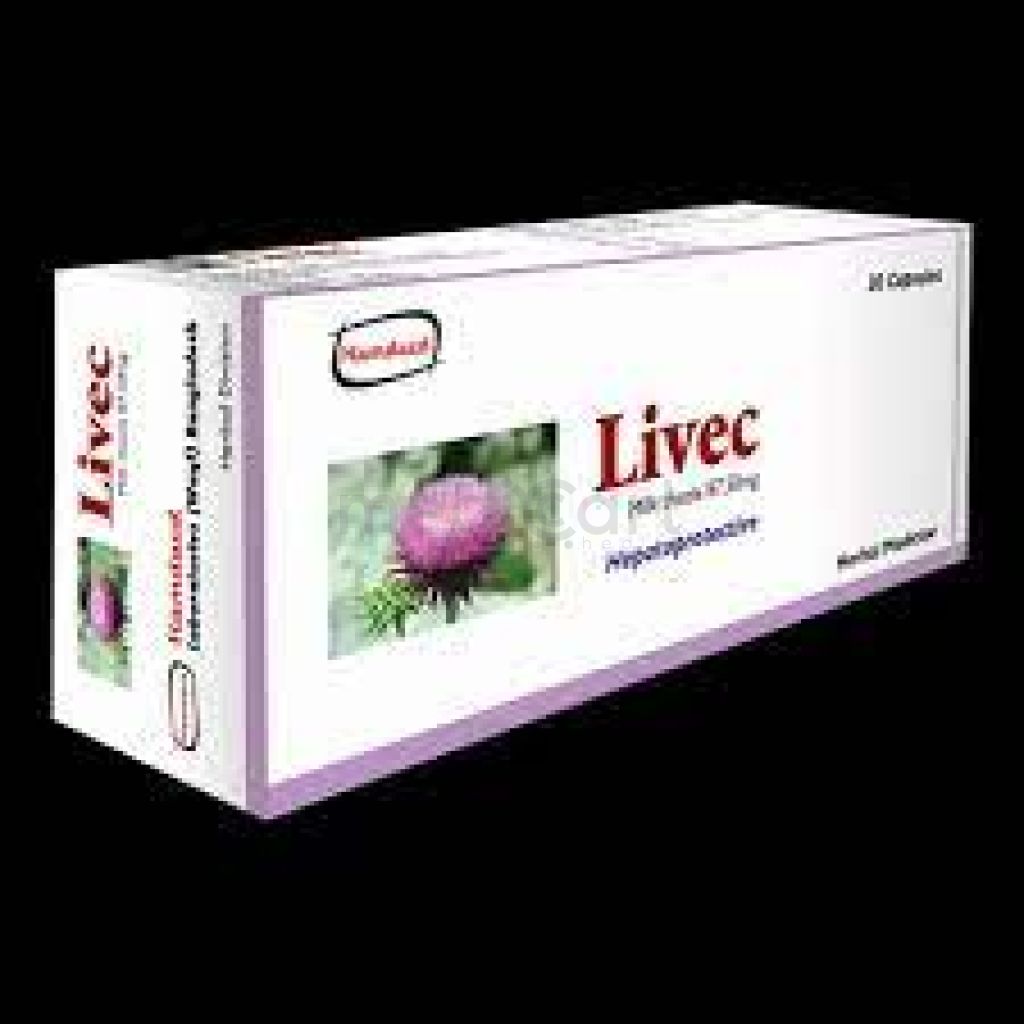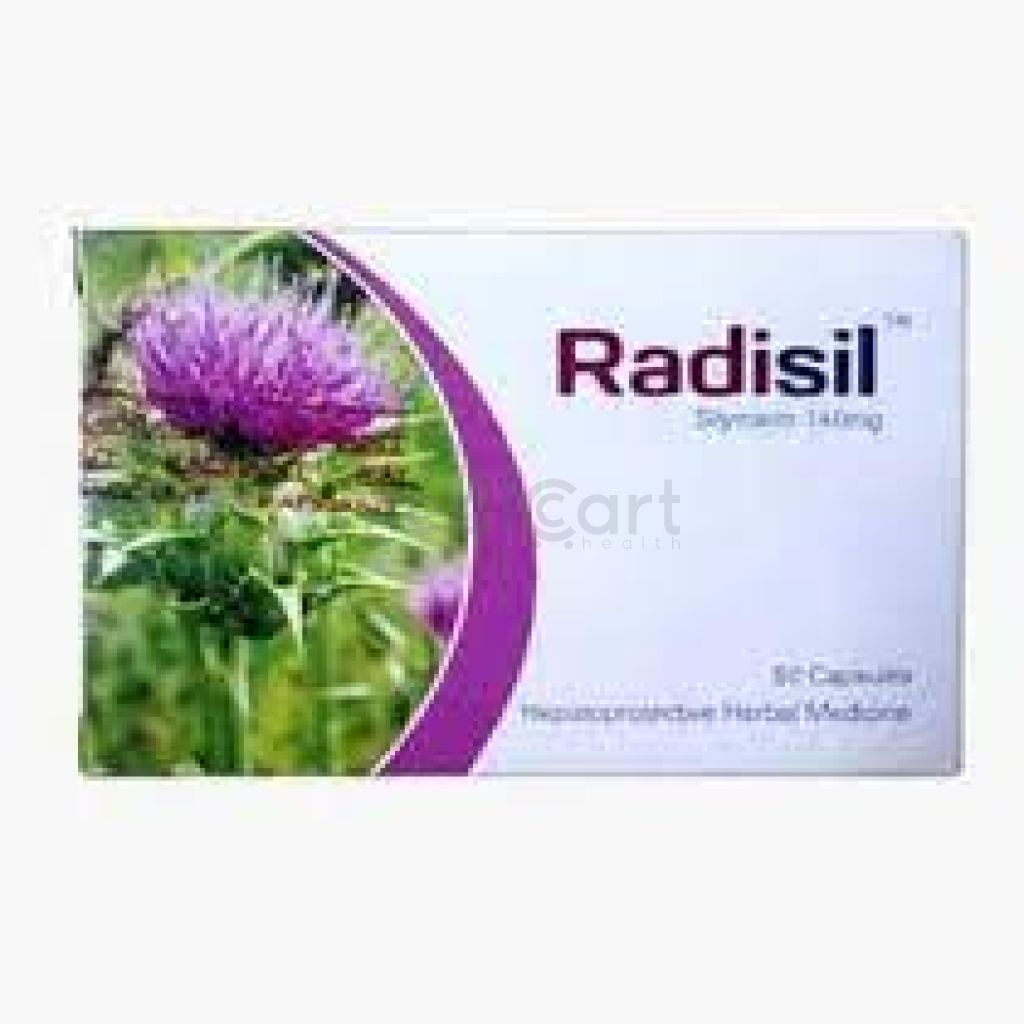

Livec - 70 mg
Capsule
Pack Size :
6 Capsule x 1 Strip
Generics :
Silymarin
Manufacturer :
HAMDARD LABROTARISE BAGLADESH
Best Price *
TK
48.00
* Delivery will be done in Dhaka city only.
More Information About - Livec - 70 mg
Description
Generic Name
ImatinibPrecaution
Cardiac disease or increased risk for CHF. Monitor for signs of severe fluid retention. Monitor CBC regularly. Renal and hepatic impairment. Monitor LFTs. Pregnancy. Lactation: Imatinib and its active metabolite are excreted into human milk; advise a lactating woman not to breastfeed during treatment and for 1 month after last doseIndication
Chronic myeloid leukaemia, Acute lymphoblastic leukaemia, Myelodysplastic disease, Hypereosinophilic syndrome, Mastocytosis, Dermatofibrosarcoma protuberans, Malignant gastrointestinal stromal tumoursContra Indication
Hypersensitivity. Lactation.Dose
N/ASide Effect
>10% Edema (53%),Neutropenia (Grade 3: 7-27%; Grade 4: 3-48%),Nausea (43%),Muscle cramps (35%),Musculoskeletal pain (34%),Thrombocytopenia (Grade 3: 1-31%; Grade 4: 1-34%),Rash (32%),Fatigue (31%),Diarrhea (30%),Headache (29%),Arthralgia (27%),Abd pain (23%),Myalgia (21%),Nasopharyngitis (19%),Hemorrhage (19%),Vomiting (15%),Dyspepsia (15%),Cough (13%),Dizziness (13%),URT infection (13%),Fever (12%),Weight gain (12%),Hepatotoxicity (6-12%),Insomnia (11%) 1-10% Flushing,Palpitation,Dry skin,Erythema,Metabolic hyperglycemia,Stomatitis/mucositis,Lymphopenia <1% Aplastic anemia,Atrial fibrillation,Avascular necrosis,Cardiac failure,Cardiogenic shock,Embolism,Eosinophilia Potentially Fatal: Hepatotoxicity, cerebral oedema, increased intracranial pressure, papilloedema. Severe fluid retention resulting in pleural and pericardial effusion, pulmonary oedema and ascites. Rarely, GI perforation.Pregnancy Category
Name : Not Classified
Description
FDA has not yet classified the drug into a specified pregnancy category.Mode of Action
Imatinib, is a tyrosine kinase inhibitor that inhibits the BCR-ABL tyrosine kinase created by the Philadelphia chromosome abnormality in chronic myeloid leukaemia (CML). It blocks proliferation and induces apoptosis in BCR-ABL positive cell lines, as well as fresh leukaemic cells from Philadelphia chromosome positive CML. Imatinib also inhibits receptor kinases for platelet-derived growth factor (PDGF) and stem cell factor (SCF), c-kit, PDGF- and SCF-mediated cellular events.Interaction
Increased serum levels w/ CYP3A4 inhibitors (e.g. azole antifungals, macrolide antibiotics). Reduced serum levels w/ CYP3A4 inducers (e.g. carbamazepine, dexamethasone, phenobarbital, phenytoin, rifampicin). May increase serum levels of substrates of CYP3A4 (e.g. ciclosporin, pimozide, triazolo-benzodiazepines, dihydropyridine Ca channel blockers, certain statins), CYP2C9 (e.g. warfarin) and CYP2D6.Pregnancy Category Note
Pregnancy Fetal harm when administered to a pregnant woman based on human and animal data No clinical studies available regarding use in pregnant women There have been postmarket reports of spontaneous abortions and congenital anomalies from women who have been exposed to imatinib during pregnancy Test pregnancy status in females with reproductive potential before initiation of treatment If this drug is used during pregnancy, or if the patient becomes pregnant while taking this drug, apprise patient of potential risks to the fetus Contraception Females of reproductive potential: Advise to use effective contraception (methods that result in less than 1 % pregnancy rates) during treatment and for 14 days after discontinuing treatment Lactation Imatinib and its active metabolite are excreted into human milk Advise a lactating woman not to breastfeed during treatment and for 1 month after last doseAdult Dose
Acute Lymphoblastic Leukemia Indicated for adults with relapsed or refractory Philadelphia chromosome positive (Ph+) acute lymphoblastic leukemia (ALL) 600 mg PO qDay Myelodysplastic/Myeloproliferative Diseases Indicated in adults with myelodysplastic/ myeloproliferative diseases associated with platelet-derived growth factor receptor gene re-arrangements as determined with an FDA-approved test 400 mg PO qDay Hypereosinophilic Syndrome/Eosinophilic Leukemia Indicated for adults with hypereosinophilic syndrome and/or chronic eosinophilic leukemia who have the FIP1L1-PDGFR-alpha fusion kinase (mutational analysis or FISH demonstration of CHIC2 allele deletion) and for patients with HES and/or CEL who are FIP1L1-PDGFR-alpha fusion kinase negative or unknown 400 mg PO qDay In patients with demonstrated F1P1L1-PDGFR-alpha fusion kinase: 100 mg PO qDay; may increase to 400 mg qDay in the absence of adverse drug reactions if assessments demonstrate an insufficient response to therapy Chronic Myeloid Leukemia Chronic phase Newly diagnosed adult and pediatric patients with Philadelphia chromosome positive (Ph+) chronic myeloid leukemia (CML) in chronic phase 400 mg PO qDay Chronic phase after failure of interferon-alpha therapy: May increase to 600 mg/day in the absence of severe adverse drug reaction and severe nonleukemia related neutropenia or thrombocytopenia in the following circumstances: disease progression (at any time), failure to achieve a satisfactory hematologic response after at least 3 months of treatment, failure to achieve a cytogenetic response after 6-12 months of treatment, or loss of a previously achieved hematologic or cytogenetic response Accelerated phase or blast crisis 600 mg PO qDay May increase to 400 mg PO q12hr in the absence of severe adverse drug reaction and severe nonleukemia related neutropenia or thrombocytopenia in the following circumstances: disease progression (at any time), failure to achieve a satisfactory hematologic response after at least 3 months of treatment, failure to achieve a cytogenetic response after 6-12 months of treatment, or loss of a previously achieved hematologic or cytogenetic response Dermatofibrosarcoma Protuberans Indicated for adults with unresectable, recurrent and/or metastatic dermatofibrosarcoma protuberans 400 mg PO q12hr Mastocytosis Indicated for adults with aggressive systemic mastocytosis without the D816V c-Kit mutation as determined with an FDA-approved test or with c-Kit mutational status unknown Without D816V c-Kit mutation: 100 mg PO qDay c-Kit mutational status unknown: 400 mg PO qDay if not responding to other therapies ASM associated with eosinophilia (a clonal hematological disease related to the fusion kinase FIP1L1-PDGFR-alpha): 100 mg PO qDay initially, may increase to 400 mg/day in absence of adverse effects if response to therapy is insufficient Gastrointestinal Stromal Tumors Unresectable and/or metastatic malignant GIST 400 mg PO qDay; may increase to 400 mg BID in patients showing clear signs or symptoms of disease progression at a lower dose and in the absence of severe adverse drug reactions Adjuvant treatment following complete gross resection of GIST 400 mg PO qDay x3 years Hepatic impairment: Severe: Reduce dose by 25%.Child Dose
Chronic Myeloid Leukemia Indicated for newly diagnosed adult and pediatric patients with Philadelphia chromosome positive (Ph+) chronic myeloid leukemia (CML) in chronic phase <1 year: Safety and efficacy not established >1 year: 340 mg/m?/day PO; not to exceed 600 mg/day Acute Lymphoblastic Leukemia Indicated for treatment of newly diagnosed children with Philadelphia chromosome positive (Ph+) acute lymphoblastic leukemia (ALL) <1 year: Safety and efficacy not established >1 year: 340 mg/m?/day PO; not to exceed 600 mg/dayRenal Dose
N/AAdministration
Should be taken with food and large glass of water.Disclaimer
The information provided herein are for informational purposes only and not intended to be a substitute for professional medical advice, diagnosis, or treatment. Please note that this information should not be treated as a replacement for physical medical consultation or advice. Great effort has been placed to provide accurate and comprehensive data. However, Medicart along with its authors and editors make no representations or warranties and specifically disclaim all liability for any medical information provided on the site. The absence of any information and/or warning to any drug shall not be considered and assumed as an implied assurance of the Company.





